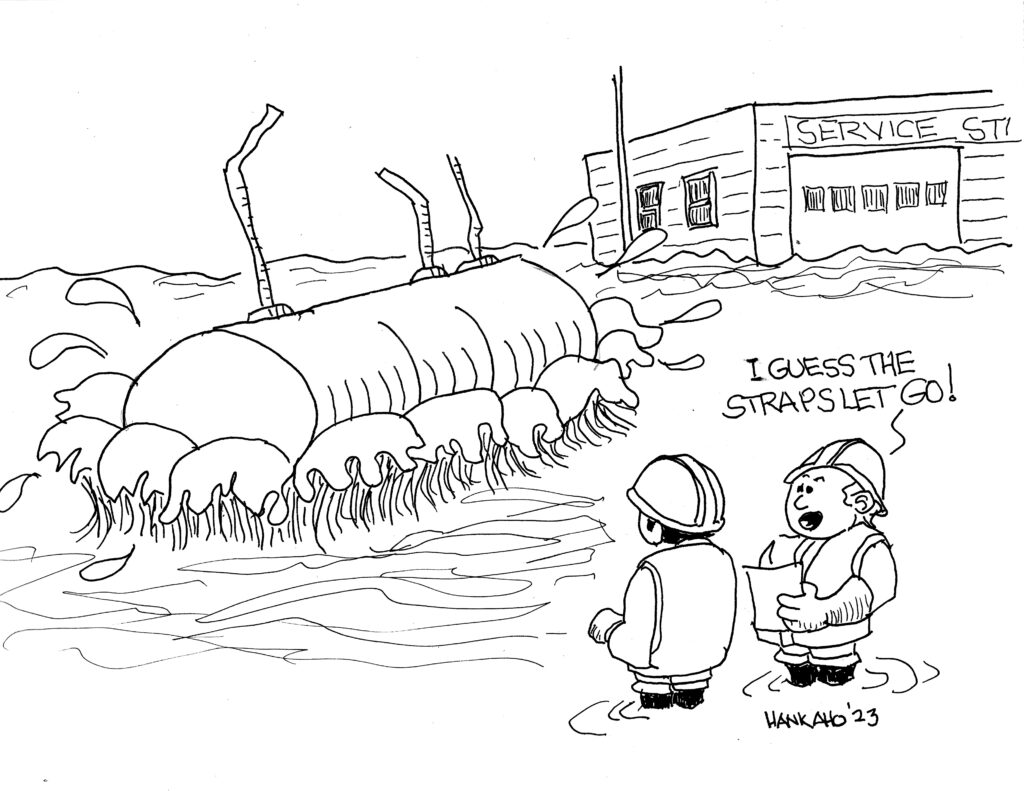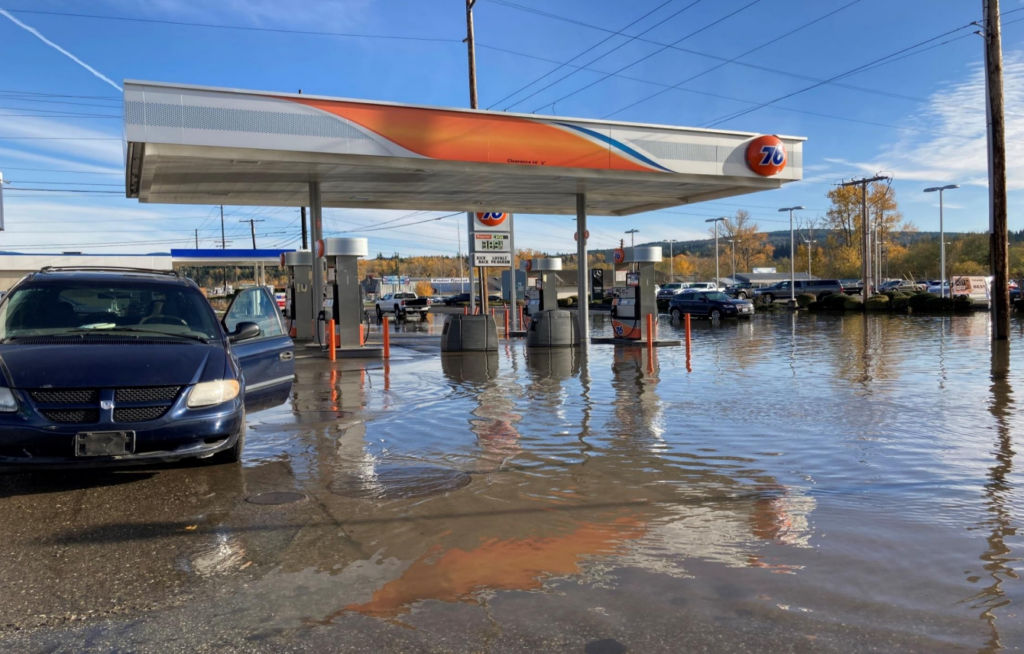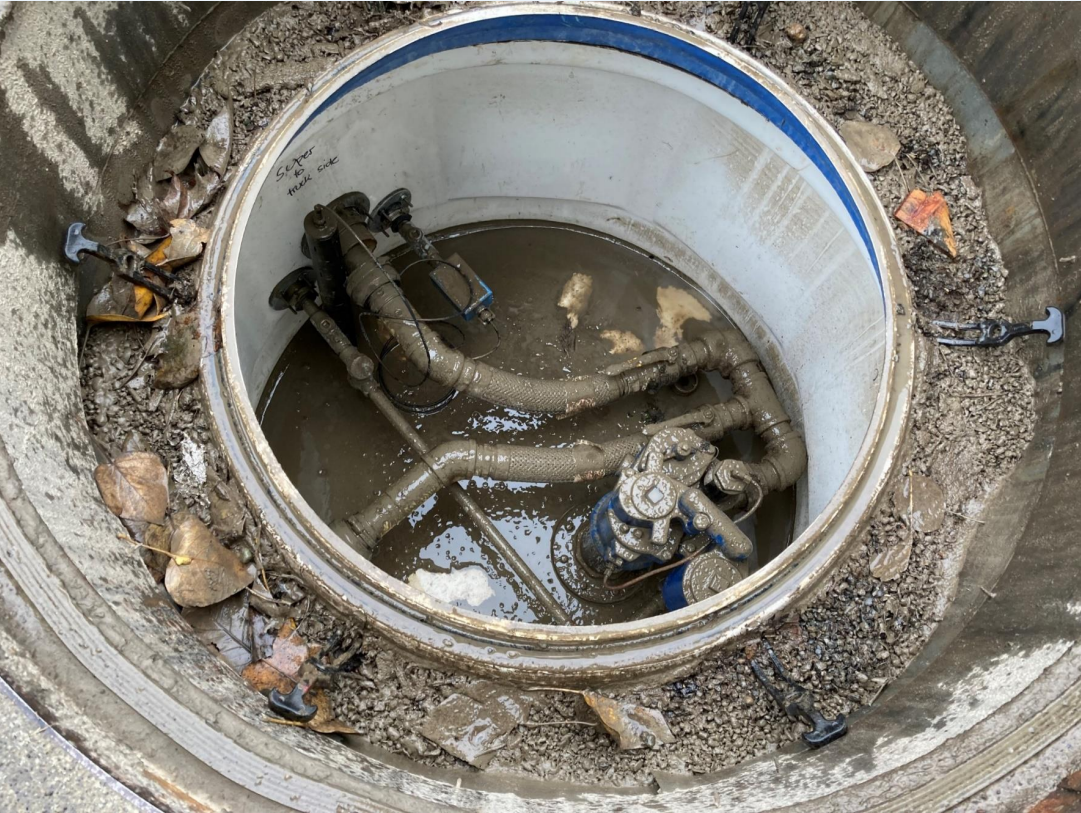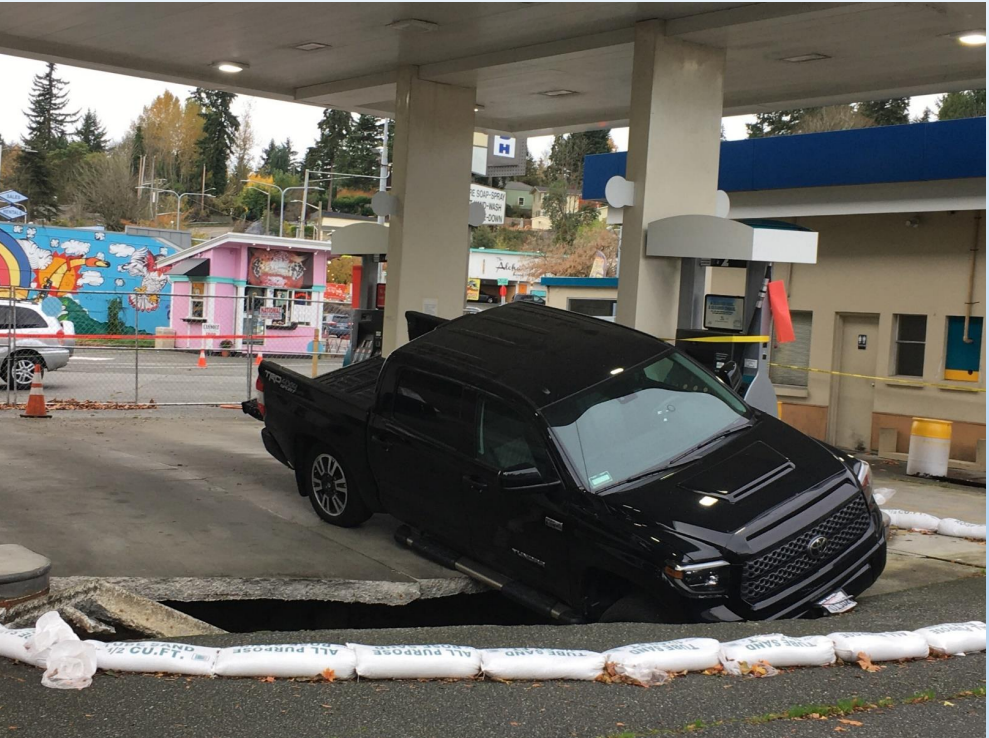Lessons Learned: Takeaways for UST Inspectors from Washington’s Unprecedented Flooding Event

In November 2021, Washington state experienced a wind and rainstorm that resulted in mudslides and flooding that turned rivers into lakes. The storm took some UST owners by surprise, as UST systems that had not previously experienced flooding were submerged underwater for several days.
Floods pose significant risks to UST systems. Floodwaters can saturate soil and fill up tank nests, which may result in the tanks becoming buoyant. When this happens, piping and/or the tank itself can be damaged and release fuel. More often, floodwaters can cause water to enter tanks and ruin fuel. When floodwaters recede, the head pressure against the tank disappears which, if there is already tank or piping damage, can raise the risk of a leak that will contaminate the environment.

For a small business, losing all the fuel in a tank is a huge loss. A station with three tanks — each containing 8,000 gallons of ruined fuel — would lose $100,000 in fuel alone, which is not covered by insurance. Of course, flooding also causes many other problems: water damage to buildings, electrical damage, and damaged convenience store products that must be thrown away. Small mom-and-pop businesses are often owned by people whose first language is not English. This can add another layer of stress, making it harder to navigate services for getting their business back up and running.

Prior to 2010, dealing with a flooded underground fuel tank in Washington was much simpler. The gas and water were not good at mixing, so after a flood, the water layer could simply be pumped out from under the fuel, and what was left was still useable product. Post 2010, things got more complicated due to adding up to 10% ethanol (E10) in gasoline. The main concern is with “entrained water” in the fuel, which may not show up on leak monitoring equipment or when sticking the tanks with water finding paste. Ethanol is water loving and if enough water gets into a tank, the ethanol and water drop out of the fuel to the bottom of the tank (phase separation). The fuel portion may no longer meet fuel quality standards and becomes unusable. For example, 84 Octane gasoline is blended with 10% ethanol to make 87 Octane. So, if the ethanol phase separates under the gasoline, the gasoline portion is ruined.
During the Washington flooding, I focused on starting with a brief 15-minute data gathering field visit to each site. Boots on the ground, one-on-one with owners was an effective way of sharing information on actions to take, rather than communicating over the phone or emailing information. Being sensitive to owners who are in shock from trauma during and after a significant flood event is vital. Many are short-staffed and busy shoveling out sediment from the stores and throwing away ruined food and materials. Focus on listening to their needs and providing simple recommendations to protect their tanks and fuel.
As flooding becomes a frequent concern due to more extreme weather patterns caused by climate change, we would like to share some of the lessons learned in Washington about how to best keep UST systems safe before, throughout, and after a flooding event.
Tips from contractors: When
removing a probe adaptor, you
may hear a vacuum. During a
flood, if the probe cap gasket
is bad, a vacuum can create a
siphon effect and draw water into
the tank until the water is below
the lip.
Going forward, I am interested in learning from others’ experiences with floodwaters and USTs. Please contact me at annette.ademasu@ecy.wa.gov if you have information to share.
Recommendations for UST Inspectors
There is quite a bit that UST inspectors can do to help make sure gas station owners are prepared for a flooding event and respond appropriately afterword.

Before a flood:
- Obtain flood maps of your area and review them to locate and document UST sites that could be prone to flood events. Individuals can view flood maps online in the FEMA flood map service center.
- Create a pamphlet for UST owners relating to floods outlining potential risks to USTs due to flooding and steps that owners can take to mitigate risk and respond correctly to floods when they happen.
- Distribute your pamphlet during routine compliance inspections, especially at flood prone sites. Talk with owners and operators directly about what actions they can take during a flood.
- Introduce yourself and get to know peers at your fuel quality agency (i.e., Department of Agriculture) in advance so that you have known contacts for communication during a flood emergency.
- Talk with flood-experienced contractors to learn actions owners can take to make their tanks more flood resilient. Keep this contact information up to date, as you may need to contact them during an emergency.
During a flood event:
- Be available to answer calls throughout the flooding. Reach out to site owners and contractors regarding flooded tank sites in the area.
After floodwaters recede:
- Be aware that owners will be experiencing trauma, shock, and will be overwhelmed. Using consideration, empathy, and listening goes a long way. When in the field assisting owners, keep it simple and brief.
- Gather UST system status information including fuel and water levels, sensor status, leak test status, damage to UST system components, and damage to the tank pad.
Recommendations for Site Owners:
Before a flood (preventive maintenance):
- Listen to the top suggestion from service providers: inspect gasket condition on the fill and probe caps frequently. A good gasket seal is paramount — if it is worn or corroded, replace the cap. Doing so can save you thousands in ruined fuel.
- Inspect the drain valve on spill buckets and replace them if needed. A leaky drain valve can allow floodwaters to enter your tank.
- Conduct a pressure decay test on each tank (even diesel) to find vapor leaks. These vapor leaks may be where floodwaters enter tanks.
- Take detailed photos of your tank pad, including cracks, raised areas, depressions, etc. Continue to look for changes from year to year. Spray white paint over any cracks on the tank pad and take photos. Check and photograph the tank risers — they should be vertical.
Prior to Flood Evacuation:
- Take an inventory printout to document gallons of fuel and if water is present.
- Turn off the power to turbines and dispensers.
Tips from businesses: Elected officials working with the federal government will need to give dollar losses to the federal government to make a determination if the losses are FEMA eligible. Keep all flood damage receipts for losses to date and current work being done. Also include any estimates for future work costs for repairing floodwater damage.
After floodwaters recede:
- Print inventory report and check water levels to determine if tanks have water. Compare the fuel level with previous printout to determine if fuel was released from a tank.
- Stick tanks with a water finding paste (use a solid thin layer and keep stick in the tank for one minute).
- Inspect the tank pad looking for new cracks, newly raised areas, and new depressions. Take photos and compare with the photos taken previously. Check the tank risers — are they slanted? If so, the tank could have shifted underground. If there are changes, contact a service provider to investigate the UST system for buoyancy issues.
- A vacuum truck service provider can remove liquid and sediment from sumps and spill buckets; there will be a lot of sediment everywhere! Never use a shop-vac or other sparking equipment at the tanks as gasoline vapors can cause explosions.
- If there is water in a tank and there are no buoyancy issues:
- A service provider should promptly vacuum out the water, wait 24 hours, and vacuum the water again. Water along the tank ullage and in fuel needs time to collect at the bottom, which makes vacuuming the tank twice is important. Vacuuming the first day after the waters recede is also important, to lessen risk of phase separation.
- If fuel has phase separated (fuel/ethanol/water layers) and there are no buoyancy issues:
- Contact your fuel quality agency (i.e., Department of Agriculture) for advice on fuel quality.
- A service provider can vacuum out bottom layers, wait 24 hours, and then vacuum layers again. The Department of Agriculture may require field sampling of the fuel using a bacon bomb, an instrument which can sample from the bottom to the top of the tank to determine if further actions are needed to meet fuel quality (i.e., flashpoint, octane).
- Do not empty the entire contents of the tank if there is evidence of compromised tank backfill, washed away pea gravel, or if the tank pad is undermined. First, have a certified tank installer survey the tank, piping, backfill, and tank nest water levels to determine when and how to ballast the tank and remove fuel.
- If fuel is ruined and there is no evidence of a ballast problem, a service provider can vacuum out all the ruined fuel from the tank.
